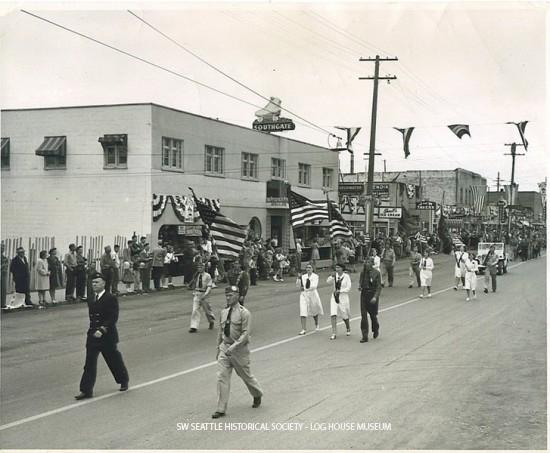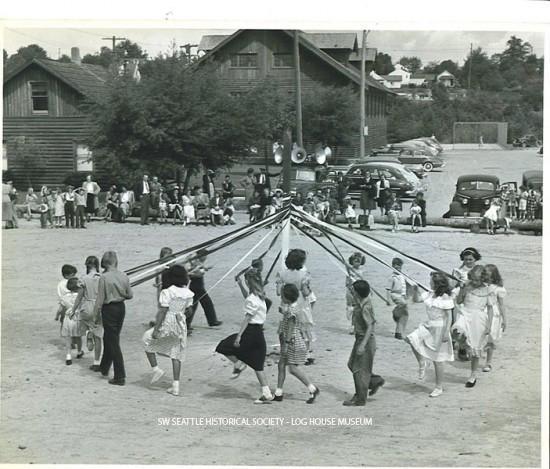In October of 1870, 319 acres of land was purchased by the Soloman family, the early settlers of White Center. Those 319 acres encompassed what is now present day White Center and the north end of Burien. They settled on a piece of land near S.W. 128th Street and Ambaum, which is now the annexation line between White Center and Burien. The area was originally swamp land which proved difficult to cultivate and farm. Eventually the Soloman family sold pieces of the original 319 acres of land to other families, such as the Hazelton’s and the Ambaum families. Logging was the earliest source of cash flow in the region.
In 1912 a group of White Center farmers raised money to extend the Seattle Street Car line from Spokane Street, through White Center, into Burien. The development of street car lines lead to the development of a business sector of the community, between Roxbury and 16th Ave SW, which included the White Center Mercantile and a grocery store. When first being developed the land was cheap but there was no sewage system. Eventually one early White Center resident, Sam Metzler, developed the Mount View Water system. Once the community was stabilized, in the mid-1920’s, the Great Depression hit the Pacific Northwest. White Center felt the hardships brought on by the times, many people were without jobs and going hungry. But this created an early sense of community cooperation. Because of the Depression the community established their political identity, voting in their first State Legislator, Jack Bond.
In World War II the community received a giant boost from the growth of shipyards and from the nearby Boeing Airplane Company. White Center than began to rapidly change and develop as the community started to recover from the Great Depression. In 1933, Congress repealed the prohibition amendment which caused many bars and taverns to appear in White Center. In 1939 the White Center Park was established, across the street from McLendons. It was one of eight original developments in the King County park systems. The original rustic style field house is still standing. In 1943, White Center Heights Elementary school opened with eleven classrooms and approximately 350 pupils.
In the 1950’s the growth of White Center was felt more in the development of schools in the area. Between 1950 and 1960, Denny Junior High, Shorewood Elementary, Salmon Creek Elementary, Roxhill Elementary, Evergreen High School, Chief Sealth High School, and Cascade Jr. High school all opened. White Center was and still is a highly diverse community, with a high population of immigrant and refugee families settling in the area.








